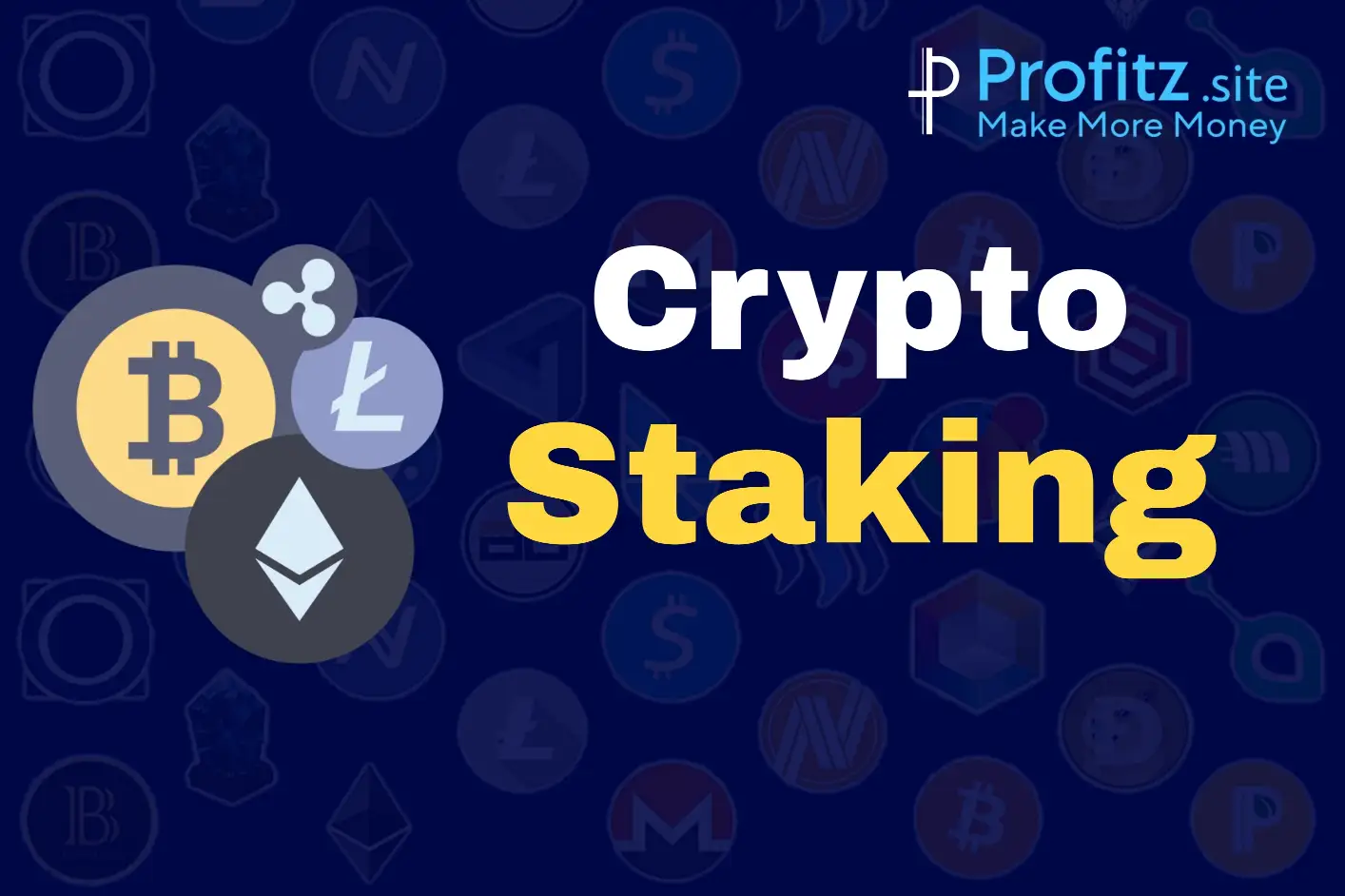Cryptocurrency has evolved beyond simple transactions and investments. With the emergence of blockchain technology, new opportunities for earning passive income have arisen. One such method gaining popularity is crypto staking. Staking allows cryptocurrency holders to participate in the network’s operations and earn rewards for their contribution. In this comprehensive guide, we will delve into the details of crypto staking, exploring its mechanics, benefits, risks, and the prominent platforms facilitating this practice.
Understanding Staking
What is Staking?
Staking is the process of actively participating in the validation of transactions on a blockchain network by locking up a certain amount of cryptocurrency as collateral. In traditional proof-of-work (PoW) systems, like Bitcoin, miners solve complex mathematical problems to validate transactions and secure the network. However, in proof-of-stake (PoS) systems, validators are chosen to create new blocks and validate transactions based on the amount of cryptocurrency they hold and are willing to “stake.”
How Does Staking Work?
In a PoS system, validators are chosen to create new blocks and validate transactions based on a combination of factors such as the amount of cryptocurrency held, the duration of the stake, and sometimes other parameters like the node’s performance. The act of staking involves locking up a certain amount of coins in a wallet, making them temporarily inaccessible. This stake serves as collateral, incentivizing the validator to follow the rules; otherwise, they risk losing a portion of their staked coins.
The Evolution: Delegated Proof-of-Stake (DPoS) and More
Some blockchain networks use variations of PoS, such as Delegated Proof-of-Stake (DPoS). In DPoS, rather than all token holders participating in the validation process, they can vote for a small number of delegates who perform the validation on their behalf. This design aims to improve scalability and transaction speed.
Benefits of Staking
1.Earn Passive Income
One of the primary attractions of staking is the ability to earn passive income. Validators are rewarded with additional tokens for participating in the network’s operations. The more tokens staked, the higher the potential rewards.
2.Network Security
Staking contributes to the security of the blockchain network. Validators have a vested interest in maintaining the integrity of the network, as any malicious activity could result in the loss of their staked tokens.
3.Incentive for Holding
Staking provides an incentive for long-term holding of cryptocurrency. Instead of selling or trading, users are encouraged to keep their tokens staked, contributing to the stability of the network and reducing market volatility.
Risks and Considerations
1.Market Volatility
While staking offers a way to earn passive income, it is not without risks. Cryptocurrency markets are known for their volatility, and the value of staked tokens can fluctuate. Validators may experience losses if the market takes a downturn.
2.Slashing Risks
Validators face the risk of having a portion of their staked tokens slashed if they engage in malicious activities or fail to fulfill their duties properly. This risk serves as a deterrent against malicious behavior but requires validators to be vigilant.
3.Lock-up Periods
Staking typically involves locking up funds for a specified period. While this contributes to the network’s stability, it means that the staked tokens are not easily accessible. Users should carefully consider the lock-up period and their liquidity needs.
Popular Staking Platforms
Ethereum 2.0
Ethereum, the second-largest cryptocurrency by market capitalization, is in the process of transitioning from a PoW to a PoS consensus mechanism with Ethereum 2.0. Users can stake their Ethereum and become validators to earn rewards.
Binance Staking
Binance, one of the largest cryptocurrency exchanges, offers a staking platform where users can stake various cryptocurrencies to earn rewards. It handles the technical aspects of staking, making it more accessible for users.
Tezos
Tezos is a PoS blockchain that allows users to become validators by staking their XTZ tokens. Validators are rewarded with additional XTZ for their participation.
Cardano
Cardano, a blockchain platform, utilizes a PoS system where users can stake their ADA tokens to participate in the network’s operations and earn staking rewards.
How to Stake Cryptocurrency
Choose a Suitable Platform
Select a platform that supports staking for the specific cryptocurrency you own. Consider factors such as reputation, ease of use, and supported tokens.
Create a Wallet
Ensure you have a compatible wallet for the cryptocurrency you intend to stake. Some platforms have integrated wallets, while others may require external wallets.
Stake Your Cryptocurrency
Follow the platform’s instructions to stake your cryptocurrency. This usually involves sending the tokens to a staking contract or a designated staking address.
Monitor and Claim Rewards
Keep track of your staked tokens and monitor the rewards earned. Some platforms distribute rewards automatically, while others may require manual claiming.
Future Trends and Developments
The world of crypto staking is dynamic, with ongoing developments and innovations. Some trends and potential future developments include:
Cross-Chain Staking
As interoperability becomes a key focus in the blockchain space, we may see more cross-chain staking solutions, allowing users to stake tokens across different blockchain networks.
Staking Derivatives
The emergence of staking derivatives could provide new opportunities for traders to speculate on staking rewards without directly participating in the staking process.
Improved User Interfaces
To attract a broader audience, staking platforms may continue to enhance their user interfaces, making the staking process more intuitive and user-friendly.
Conclusion
Crypto staking is a dynamic and evolving aspect of the blockchain space, offering both opportunities and challenges for participants. As blockchain networks continue to mature, staking is likely to play an increasingly significant role in shaping the future of decentralized finance. As with any investment or financial decision, potential stakers should conduct thorough research and carefully consider the risks and rewards before participating in staking activities.
